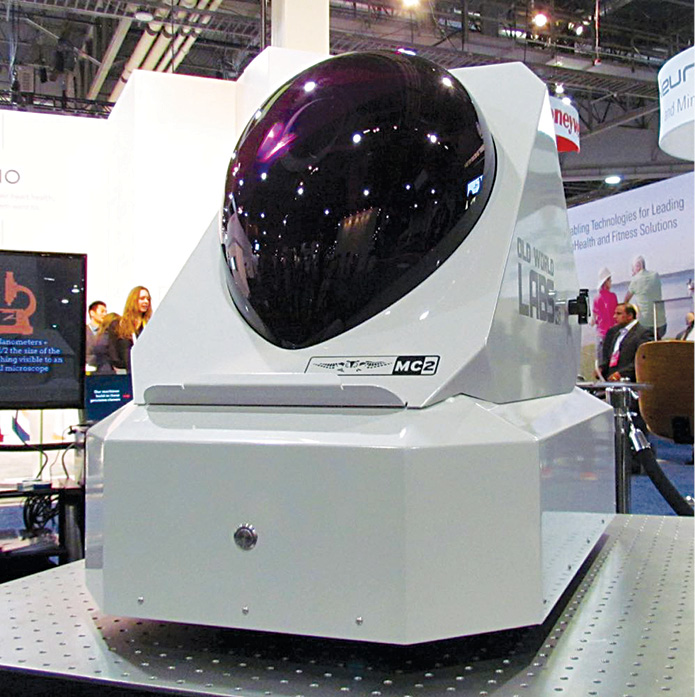In a test on tissue infected with Staphylococcus aureus (S. aureus), devices were triggered through a wireless transmitter to administer two 10-minute heat treatments. The devices safely dissolved within two weeks. In a subsequent in-vitro lab experiment, another device was made to administer antibiotic ampicillin to kill E. coli and S. aureus.
According to Hu Tao, first author of the study, “The new wireless therapy devices are robust enough to survive mechanical handling during surgery but designed to harmlessly dissolve within minutes or weeks, depending on how the silk protein was processed.”
Helping paralysed people walk again. Historically, one of the biggest problems concerning implants has been the mechanical mismatch between soft tissue and stiff implants. For some, this can cause minor issues like inflammation, while for others, it might mean outright rejection by the body.
A team of multi-disciplinary experts in Switzerland has developed a soft, flexible implant called e-Dura, which mimics the shape and elasticity of dura mater, the protective membrane of the brain and spinal cord.
Armed with electrodes, interconnects and chemotrodes that can handle millions of cycles of mechanical stress, chemical injections and electrical stimulation pulses, the device enables those with a paralysed spinal cord to walk again. It is also capable of delivering electrical impulses and chemicals and even monitoring electrical signals from the brain in real-time. e-Dura, which has been tested successfully on lab rats, is now moving towards clinical trials. Because it has the same mechanical properties of dura mater, it avoids problems like inflammation and rejection, and can also remain in the body for a long time.
Magic cure for rheumatoid arthritis. British drug-maker GlaxoSmithKline recently demonstrated an implant capable of relieving patients of rheumatoid arthritis, a chronic condition that afflicts innumerable people across the world. The tiny device—the size of a small coin—is embedded into the neck of the patient, from where it influences the nervous system by sending electrical impulses into a major nerve that relays brain signals to the body’s major organs.
Firing such impulses for around three minutes a day has shown to reduce the amount of chemicals produced by the spleen, which is responsible for abnormal inflammation in the joints of people with rheumatoid arthritis.
The company is working to develop a smaller version of the device, and hopes that in the future, this ability to bring about a balance in the body can also help cure conditions like diabetes and asthma.
Medicine’s tryst with 3D printing is rather exciting
Imagine the day when doctors can print customised implants and medical devices for their patients, right on their desk! Well, that day is not too far off, considering some of the recent advancements in 3D printing.
Old World Labs (OWL), for example, has demonstrated two printers, MC-1 and MC-2, which use a process called stereolithography (SLA) to print objects, unlike most other current-generation 3D printers that use fused deposition modelling (FDM) technique.
In an SLA, lasers harden layers of liquid plastic or resin into 3D shapes. This can create much more detailed devices with a smoother finish as compared to FDM. OWL’s makers claim that their printers are even better than other SLA printers in the market, as these can print objects that are 200 times more accurate than objects created with other SLA printers.
The company is also exploring useful medical technology that can be printed with these machines. For example, one can print microfluidic devices to deliver drugs to cancer patients. These devices are highly detailed, with tiny channels that circulate prescription drugs into a patient’s body.
It is also possible to print bio-resorbable tissue scaffolds with resins (pending FDA approval), for cartilage-replacement surgeries. The tissue scaffolds, injected with stem cells, can be implanted in the knee. Once the stem cells grow and replace the missing cartilage, the printed tissue scaffolds would dissolve safely inside the body.

A bright future dotted with challenges
It is evident that medical electronics is part and parcel of our future. The rate at which folks in the industry and academia are innovating in this space, we might actually see implants being sold in medical shops and doctors printing devices on their desks.
However, some practical issues need to be sorted out before that. One, of course, is the well-known issue of battery life, a serious concern that limits the life of implants.
Several options are being explored to overcome this. While some are experimenting with wireless charging, others are working on off-beat options, such as a battery-less cardiac pacemaker developed at University of Bern, Switzerland. The pacemaker charges itself much on the lines of an automatic watch.
Another issue is security. In 2012, American TV show Homeland featured an episode in which terrorists hacked into the pacemaker of the US vice president and assassinated him. As readers stood aghast at the possibility, Forbes explored it and asserted that it is a real danger.
Around the same time, famous hacker Barnaby Jack and others like him demonstrated the possibility of hacking into medical devices like insulin pumps and pacemakers. While some companies revamped their devices after that, the danger still lurks as technical publications around the world continue to discuss this as a serious issue. Security features have to be made mandatory in medical devices, if patients are to have complete confidence in these.
In the years to come, these issues will hopefully be ironed out, so that the wonderful research by today’s labs can, so to say, win a place in people’s hearts!











This is quiet a good inovation especially for the rural areas like telemedicine